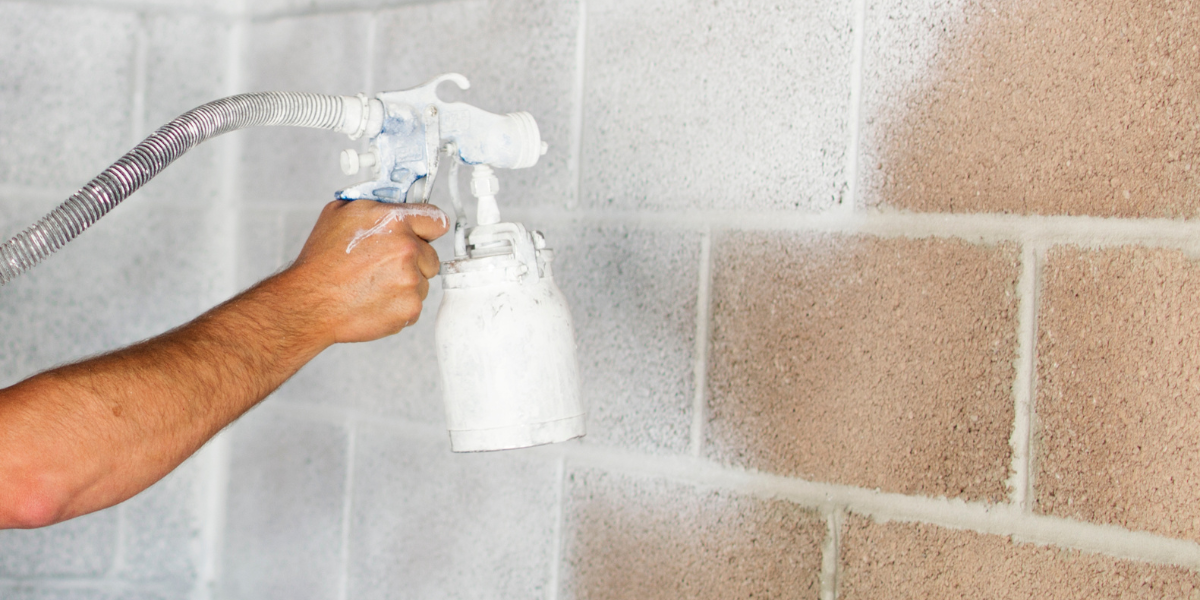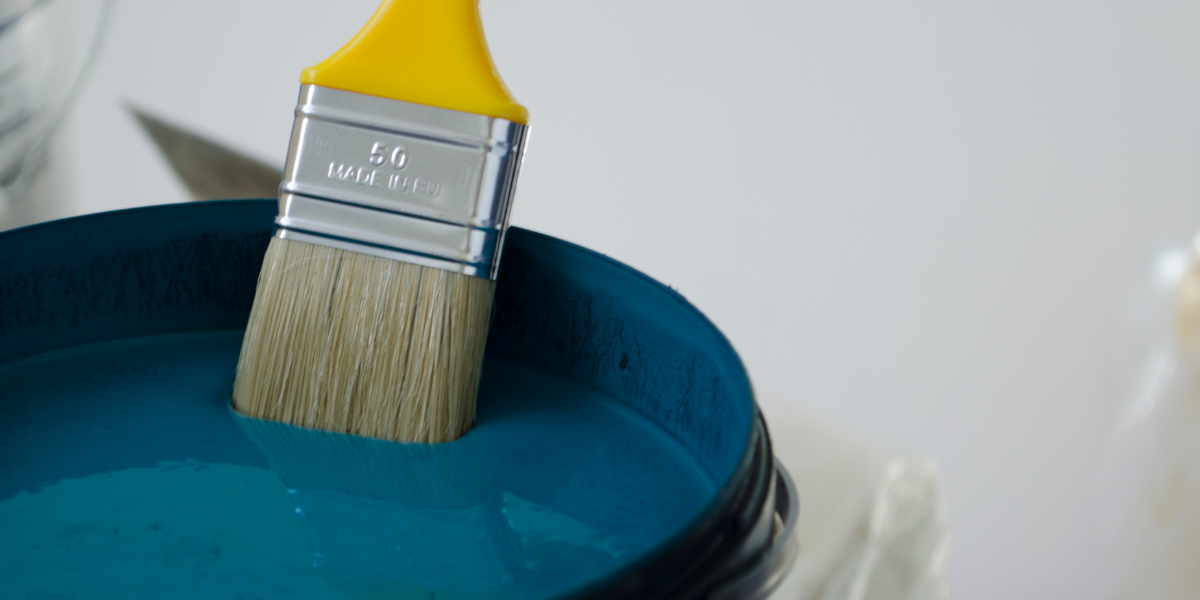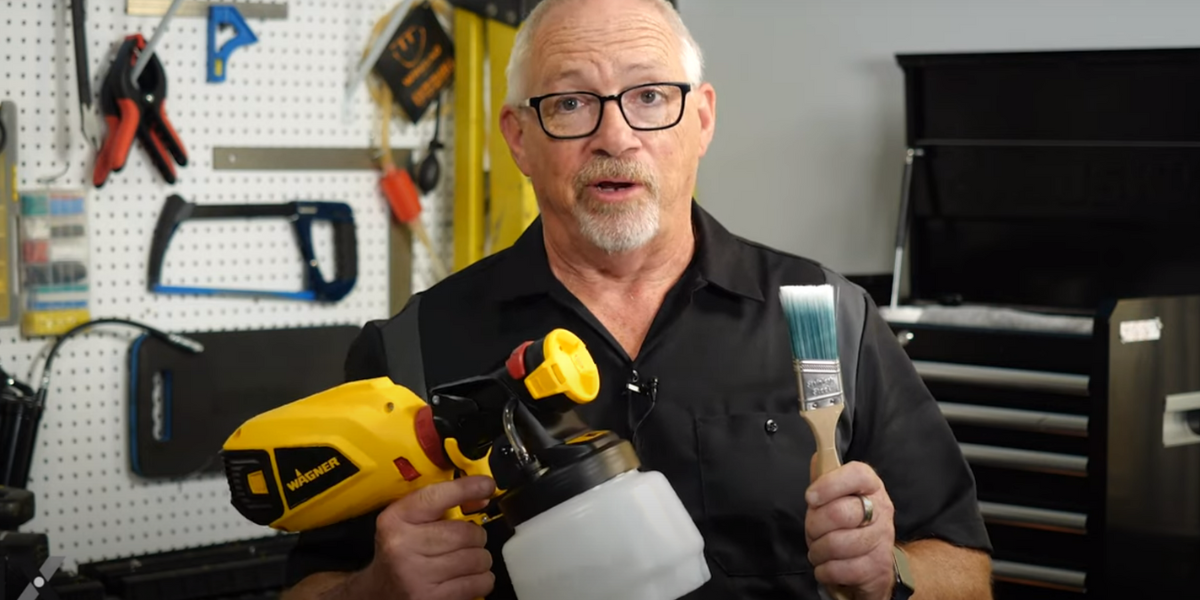Brush vs Spray Painting
Should you pick up your spray can or your brush?
Are you getting started on a new project and wondering what’s the best way to paint? For years, the debate has raged on regarding what is the best option; is it spray paint or is it brush paint? Well, the answer is fairly simple: it depends! There are projects for which spray paint is superior to brush paint and there are others where brush paint reigns supreme. Ultimately it comes down to knowing what exactly the differences are between the two methods and what you’re working on. We’ve broken it down for you here and by the end of this article, you should feel confident about whether to pick up your brush or your spray can!
What is Spray Paint?
Spray paints are essentially liquid paint that comes in an aerosol container. When you push down on the nozzle a large amount of air pressure is released, which turns the paint into a fine, even mist that you can then apply to surfaces. Spray paint offers different varieties of finishes such as gloss and matte, and is typically oil-based, which is great for creating hard and durable finishes.

Advantages of Spray Paint
- Speed: Spray painting is a much faster and less labor-intensive process than brush painting or using a roller. Spray paint also dries much faster than paint that has been brushed on.
- Coverage: Spray paint is often oil-based; therefore, you only need one coat to get the job done as it has a high viscosity and is resistant to being deformed.
- Flexibility: Spray paint allows you to get into all the nooks and crannies that you may otherwise not be able to reach with a paintbrush. It can also be applied to a variety of surfaces such as metal, plastic, and wood.
- No brush marks: Brush marks can be quite unsightly. With spray paint, you don’t have to worry about leaving streaks on the wall.
Disadvantages of Spray Paint
As fast and efficient as it is, spray paint is not without its disadvantages. It often takes quite a bit of practice to learn how to use spray paint well and apply it evenly. Without proper care and attention, you could be left with splotchy, runny paint that ends up costing you much more than it saves.
- Uneven coverage: Although you can get sufficient coverage with one coat of paint, this often takes skill. Spray paint can be difficult to control with precision. It is vulnerable to dripping, and unevenness, and it can leave some areas with layers of paint that are too thick and some that are too thin.
- Paint Use: Many of the fine mist droplets inevitably drift away during usage, thus making it sometimes a wasteful and expensive process.
- Adhesion: Spray paint requires areas with good ventilation and low humidity. If the area you are painting is not prepared properly or is too cold or damp, the paint will not stick to the surface well. Spray paint is also typically oil-based, which does not adhere to surfaces as well as other types of paint.
- Prep time: Although the painting process when using spray paint is quick, the prep time is not. You will need to set up your equipment first, by connecting the cords and hoses appropriately and wearing your safety goggles and respirator masks. Due to these equipment requirements, there is always the risk of failure with some paint sprayers. However, there is no need to worry. If you are in need of some replacement parts for your sprayer, we've got you covered.
What is Brush Paint?
Brushing paint on is a tried-and-true method when working on a project. Sometimes the good old-fashioned way is the best way. Or is it? Brush paint is usually latex based which is a better option for the environment. It doesn’t lose color over time and is generally an affordable option compared to oil-based spray paint.

Advantages of Brush Painting
- Control: Brush paint allows you to control how much paint you use and where exactly you apply it. This makes brushing your paint on the perfect choice if you are painting something highly detailed that requires a delicate touch. A great quality brush can give you perfect lines that spray paint can not.
- Coverage: Brush paint allows for more even coverage as it is easier to control the paint with greater precision. You are able to go over each area carefully and uniformly to achieve your desired result.
- Adhesion: Using a paint brush uses less paint per layer than spray paint. This means the paint can stick to the surface well and thus lowers the risk of dripping as the paint is applied more evenly. Furthermore, latex paint which is typically used when brush painting naturally adheres to surfaces well.
Disadvantages of Brush Painting
- Time Consuming: Applying paint to large surfaces using a brush can be a very slow and tedious process that involves a lot of labor and patience.
- Coats: It often requires more than one coat to create an even look as brushes often layer on paint thinly. This also adds to the time consumption component.
- Brush Marks: If you do not take adequate care and your paint or brush is too old then brush painting can often leave you with highly visible and unsightly brush marks. You will require a top-heavy coat to resolve this and that adds to the cost of the project.
- Flexibility: It is difficult to get into the tiny spaces that spray paint can easily get into.
Painting Tips to Get the Job Done Right
Regardless of which method you use, there are some key bits of information you'll need to know to get the most out of your paint. From preparation to safety, make sure you follow these tips to get the job done right.
- Before you begin any painting job make sure that you have prepared the surface adequately. Make sure that your surface is as smooth as possible and lightly sand any surfaces that are glossy. Adequate preparation will help your paint last longer and adhere to surfaces better.
- Make sure you have cleaned your work surface before you begin. Remove any oils, grease, and debris with a cleaning alcohol and ensure that the surface is completely dry before you begin. Working on a wet surface could result in peeling and flaking paint.
- Avoid using solvents on surfaces that have been painted before as this could cause your new paint to pull away.
- Always use a primer. Priming your surfaces before you paint them will give you a smooth finish. This is especially true if you are painting wood or drywall as these are porous and can absorb paint and leave your surface looking rough. It is also important to use a primer when you are painting over a dark color to ensure the new color is not distorted.
- Make sure you have adequate safety gear and work clothes during prep time and while painting. This is particularly important when you are working with spray paints that are toxic. You will need gloves, coveralls, safety goggles, a paint respirator, and a dust mask just to get started. Also ensure that you have good ventilation if you are working indoors.
- Finally, make sure you cover everything that you don’t want covered in paint, particularly when painting indoors.

We hope this guide will help you make the best choice for your next project. Remember there is no one option that is perfect for everything. When considering which option to choose, remember the strengths and weaknesses of each option and what type of project you’ll be working on. For example, if you’re working on a large area that you are looking to finish as quickly as possible, and money is not an issue then spray painting may be the way to go. However, if you have the time and labor and you’re working on something that requires precision, then brush painting might be the best option. Take the time to find out what’s best for you!
Once you're ready to get started we've got some more painting hacks for you, to make the job a little easier.
